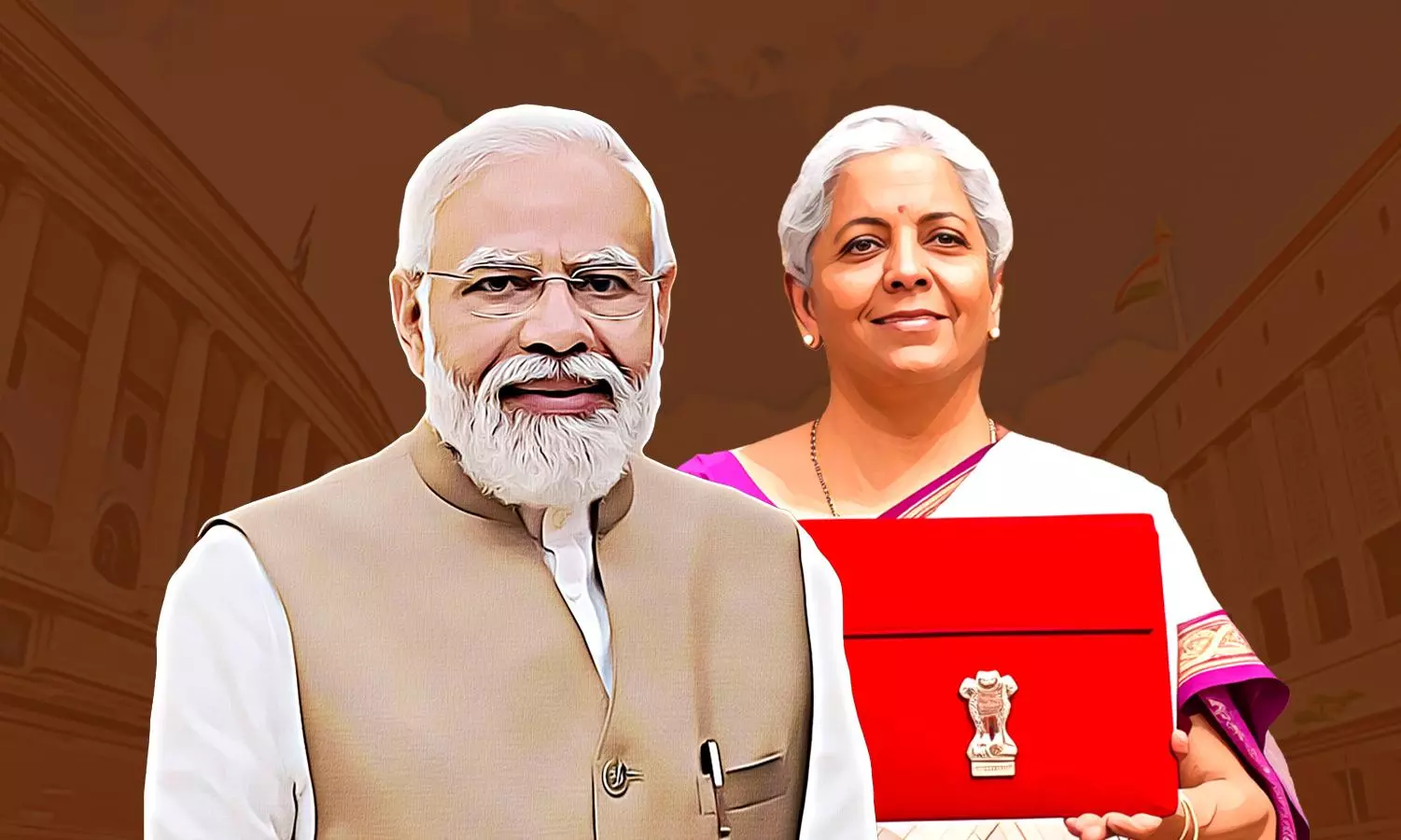
- Home
- India
- World
- Premium
- THE FEDERAL SPECIAL
- Analysis
- States
- Perspective
- Videos
- Sports
- Education
- Entertainment
- Elections
- Features
- Health
- Business
- Series
- In memoriam: Sheikh Mujibur Rahman
- Bishnoi's Men
- NEET TANGLE
- Economy Series
- Earth Day
- Kashmir’s Frozen Turbulence
- India@75
- The legend of Ramjanmabhoomi
- Liberalisation@30
- How to tame a dragon
- Celebrating biodiversity
- Farm Matters
- 50 days of solitude
- Bringing Migrants Home
- Budget 2020
- Jharkhand Votes
- The Federal Investigates
- The Federal Impact
- Vanishing Sand
- Gandhi @ 150
- Andhra Today
- Field report
- Operation Gulmarg
- Pandemic @1 Mn in India
- The Federal Year-End
- The Zero Year
- Science
- Brand studio
- Newsletter
- Elections 2024
- Events
- Home
- IndiaIndia
- World
- Analysis
- StatesStates
- PerspectivePerspective
- VideosVideos
- Sports
- Education
- Entertainment
- ElectionsElections
- Features
- Health
- BusinessBusiness
- Premium
- Loading...
Premium - Events

If keeping Nitish and Naidu happy is what it takes to keep the show going, that's exactly what this government will do
Finance Minister Nirmala Sitharaman’s seventh Union Budget is significantly influenced by the recent general elections, reflecting job creation and curbing food inflation as its main priorities.
Her budget, shorn of the usual rhetoric on ‘Viksit Bharat’ and nationalism, focuses on jobs and skilling. It also aims to increase investment in the rural sector for boosting storage and processing farm produce.
Focus on agricultural research, natural farming
Even though overall inflation is under control at 4.5 per cent, the government has been grappling unsuccessfully with jobless growth and food inflation – the two factors that seem to have contributed heavily to the poor electoral outcome, especially in Uttar Pradesh.
The government is prioritising agricultural research and natural farming. To withstand the vagaries of weather and to ensure higher yields, 109 varieties of horticulture crops are being released. This is significant as fruits and vegetables are hit most by changing weather patterns.
Large clusters for vegetable production are being made near major cities, and farmer-producer organisations are being promoted to build supply chains, storage and marketing. It is estimated that 12 to 15 per cent of fresh fruits and vegetables grown in the country, which is worth ₹44,000 crore, go to waste every year.
The Finance Minister spoke of higher minimum support price (MSP) offered to the farmers recently, but did not mention legal guarantees, a demand raised by them.
The thrust was on promoting oil seeds and pulses, whose high prices have been a cause of concern. The prices of edible oil and pulses, staple diet of a large section of the population, have remained high for a considerable time and contributed to food inflation.
Thrust on employment, skilling
The Budget has offered a package for employment and skilling, recognising the fact that both unemployment and underemployment exist in the country. The Prime Minister’s package offers employment-linked incentives with an outlay of ₹2 lakh-crore annually.
While employees will get wages in the form of a subsidy, what is significant is an incentive to employers as well. The government believes that the ‘Employment-Linked Incentive Scheme’ will increase employment, both in private and public companies, especially in the manufacturing sector.
Since lack of skills is leading to underemployment and even unemployment, the government is providing tax breaks and financial reliefs to the private sector employers for skilling, training and even for offering internships.
Through this new policy initiative, the government is hopeful that it will be able to nudge the manufacturing companies to employ relevant workforce. For instance, the chairman of Larson and Turbo had recently lamented that he has a vacancy of 45,000 engineers, but he is not getting an employable workforce.
Generous allocations to Bihar, Andhra
The budget takes care of two important allies of the government at the Centre – the Janata Dal (United) and the Telugu Desam Party (TDP) – both crucial for its survival, by generously allocating funds to Bihar and Andhra Pradesh.
Legally, the Finance Minister cannot fulfil the demand of a ‘special financial package’ sought by the two states, so she has instead provided them with special projects.
Since the projects are inserted in various paragraphs, the spendings are not consolidated at one place. For instance, in the speech, Bihar expressways and bridges are budgeted for over ₹26,000 crore while there is a proposal to set up a 2,400 MW power project at Pirpainti in the state.
Andhra Pradesh is being promised ₹15,000 crore for the development of its capital city in Amravati. While the funds will be arranged from multilateral agencies, the Centre will stand in and provide sovereign guarantee.
A commitment has also been given for the completion of the Polavaram irrigation project. Singling out two electorally convenient states is certainly going to raise the hackles of other chief ministers.
Fiscal deficit under control
To be fair, the Finance Minister, while doing her calculations, had not taken her eyes off fiscal consolidation. The fiscal deficit is well under control at 4.9 per cent of GDP and, by 2026, she is confident of achieving the target of 4.5 as mandated by the FRBM Act.
Although she did not speak about it in the Budget, the Reserve Bank of India recently provided a headroom to the Finance Minister by offering her ministry a bounty of ₹2.11 lakh-crore in the form of dividend.
India’s external sector has been doing well, with the current account deficit at 0.7 per cent of GDP and forex reserves aggregating to six to eight months of import bill. The remittances from abroad have been healthy and it had substantially offset the trade balance caused by lower exports and higher imports.
Minor relief for taxpayers, jolt to retail investors
The Finance Minister ignored the Old Tax Regime and gave marginal relief to middle-class taxpayers by tinkering with the New Tax Regime. She, however, hit hard on those investing in stock markets by raising Short Term Capital Gains Tax (STCG) by 5 per cent and Long Term Capital Gains Tax (LTCG) by 2.5 per cent. The stock markets tanked immediately.
A point of concern is the high valuations of stocks with heightened speculations in the futures and options segment. The F and O segment is being taxed.
Besides, both public and private banks have been expressing concern over deposits moving away from them towards stock markets, hurting their credit-deposit ratios.
Mitigation measures for climate change
The Budget, however, laid a lot of emphasis on issues related to climate change. It spoke about allocations to mitigate disasters caused by flash floods and cloudbursts. It also talked of special packages for urban spaces to improve drinking water supply and sanitation.
The Budget speech did not talk about sectoral allocations for individual ministries such as railways, defence and public sector undertakings.
The Ministry of Railways that once had a place of pride enjoying a separate budget did not find any mention in the Budget speech of the minister.
Course correction
The speech, relatively short compared to long renderings in the past, has a word count of 14,498. It may not have one single big idea but seems more in the nature of course correction and consolidation of its previous policies aiming at growth.
Prime Minister Narendra Modi never hesitates to withdraw his own plans whenever it hits a roadblock, especially when it may hurt his electoral calculations.
In the past, he withdrew the Farm Bills, went slow on land reforms and put other 'irritating' central laws on slow burn. The Budget in that sense is a continuation.
Beyond pronouncements, the challenge lies in its effective implementation.


